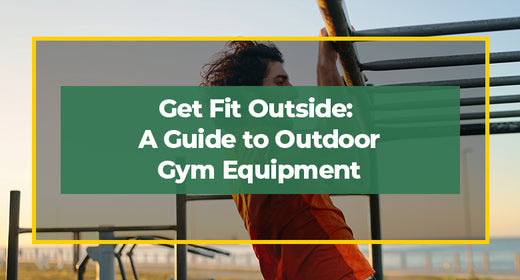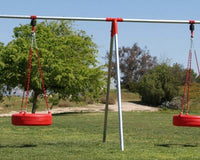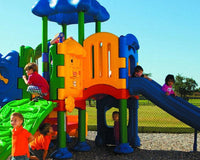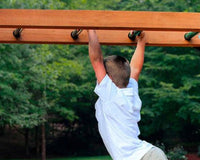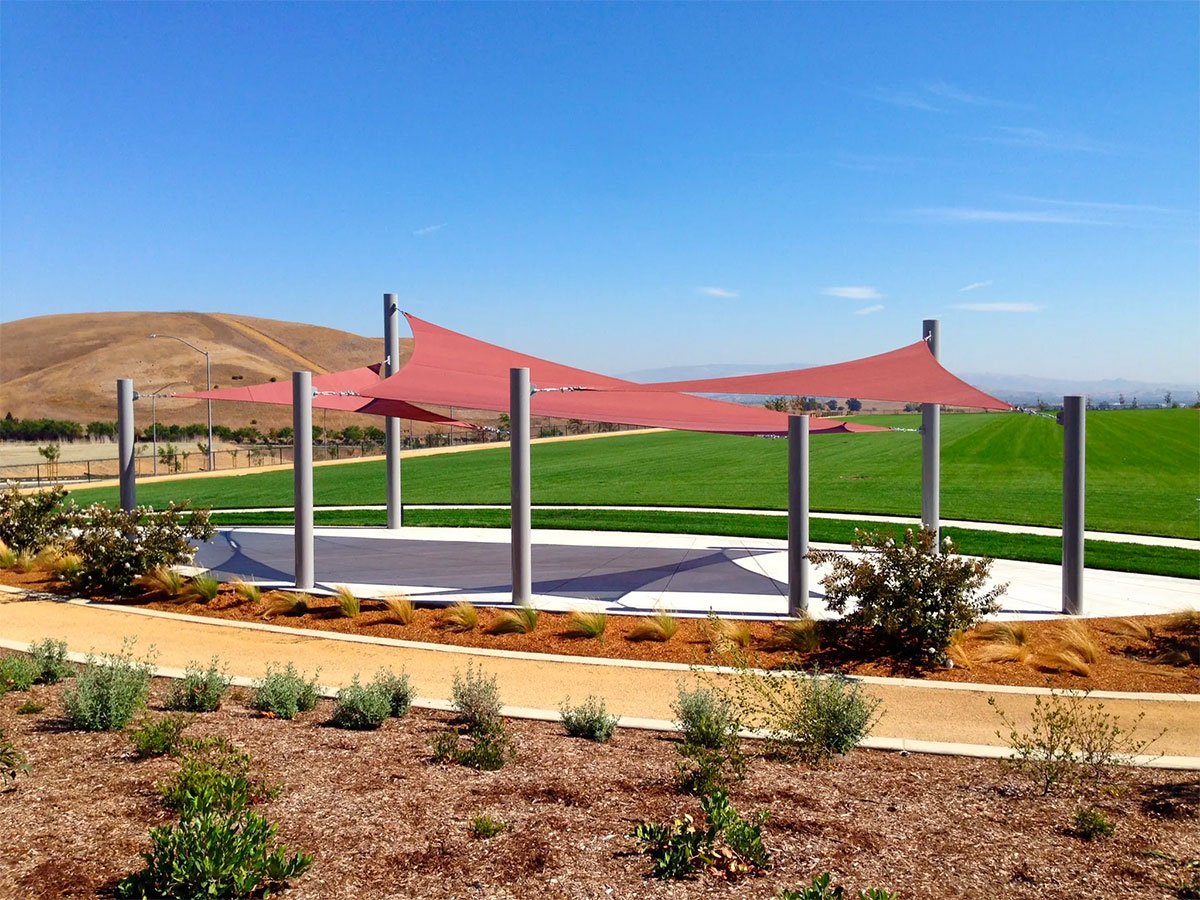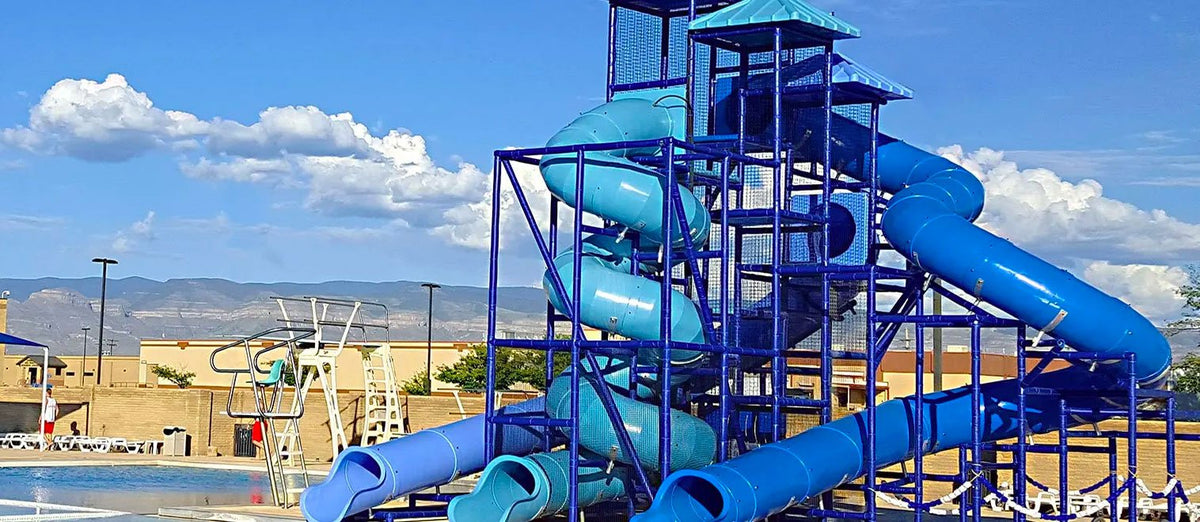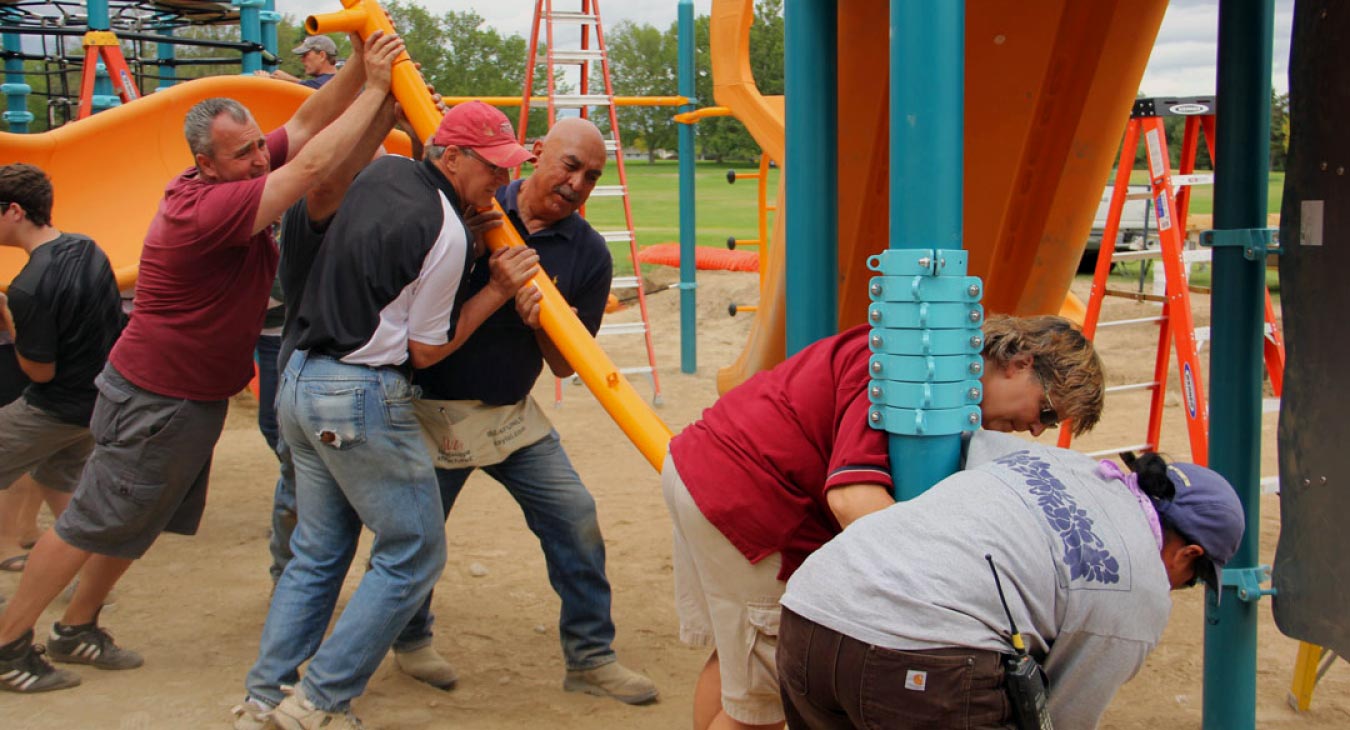Welcome to your guide on how to use outdoor gym equipment. For fitness buffs looking for a change of scenery or for beginners wanting to kick start their fitness journey, outdoor gym equipment offers a unique and refreshing way to stay fit.
This guide will walk you through everything you need to know about outdoor gym equipment, from understanding what it is and how to use it to the benefits you can reap.
So, let’s step outside the traditional gym setting and embrace the fresh air as we dive into the world of outdoor gym equipment. Let’s get started!
Understanding Outdoor Gym Equipment

What Is Outdoor Gym Equipment?
Outdoor gym equipment, as the name suggests, is a collection of fitness apparatus designed specifically for outdoor use. It’s like bringing the gym into the great outdoors, allowing you to enjoy fresh air and sunshine while you work up a sweat.
Outdoor gym equipment comes in a variety of forms, each designed to target different areas of the body and cater to various fitness levels.
Using outdoor gym equipment is a fantastic way to mix up your workout routine and add a breath of fresh air—literally—to your fitness journey. In addition to the physical benefits of exercise, being outdoors in the park can boost your mood and reduce stress levels.
Highlight: With outdoor gym equipment, you can enjoy the benefits of a gym workout with the added bonus of fresh air and sunshine.
How to Use Outdoor Gym Equipment Effectively

Learning how to use outdoor gym equipment safely and effectively helps you reap the most benefits. For instance, it’s important to know your fitness goals, whether it’s achieving a healthier body weight, strengthening abdominal muscles, or building upper body strength.
This will determine what kind of outdoor workout equipment you’ll need, such as pull-up bars for arm and chest strength, as well as equipment for leg exercises to ensure a full-body workout.
You might also consider items that can help elevate your heart rate, such as jump ropes or agility ladders. If you're setting up in a park, look for options that offer a variety of challenges to keep your workouts engaging and effective.
Warm-Up Before Exercise
Before starting any workout, it's crucial to warm up. A proper warm-up increases blood flow to the muscles, enhances flexibility, and reduces the risk of injury.
Spend 5-10 minutes engaging in light cardiovascular exercises, such as brisk walking or jogging, followed by dynamic stretches.
Focus on your legs to prepare them for the workout ahead, and include stretches for your shoulders as well. You can also add step ups on benches to warm up your calf muscles. This will help you take on the challenge of your exercise routine with a reduced risk of injury.
Outdoor Gym Equipment for Strength Training
Strength training workouts are an excellent way to challenge your body and build muscle, whether you're at the gym or in a park. These workouts target various muscle groups, including your chest and shoulders, helping you achieve a balanced and powerful physique.
Pull-Up Bars
Grip the bar with your palms facing away (overhand) or towards you (underhand). Engage your core and pull your body up until your chin is above the bar. Lower yourself slowly and repeat. If you're a beginner, start with assisted pull-ups or negative pull-ups.
Leg Press Machines
Adjust the seat so your knees are at a 90-degree angle when your feet are on the platform. Push the platform away by extending your legs, keeping your back flat against the seat. Return to the starting position with control. Increase the weight gradually.
Chest Press Machines
Sit with your back against the pad and grip the handles. Push the handles away from your chest until your arms are fully extended. Return to the starting position slowly. Adjust the weight as needed.
Dip Stations
Grip the handles and lift your body off the ground. Lower yourself by bending your elbows until your upper arms are parallel to the ground. Push yourself back up to the starting position. For beginners, use assisted dips or focus on holding the position.
Climbers
Climbers, such as vertical ladders or rock climbing walls, are used by gripping and pulling yourself up using both hands and feet. They improve strength, coordination, and overall fitness by engaging multiple muscle groups.
Outdoor Gym Equipment for Flexibility and Balance
Outdoor gym equipment offers a fantastic opportunity to enhance flexibility and balance while enjoying the fresh air of a park. Understanding how to use outdoor gym equipment effectively can target key areas like your chest and shoulders, contributing to overall physical wellness.
Incorporate various stations, such as parallel bars and the balance beam, into your routine to stretch and strengthen your muscles, ensuring a well-rounded and engaging workout experience.
Stretch Stations
Use the bars and platforms to perform a variety of stretches. Focus on major muscle groups, holding each stretch for 20-30 seconds. Avoid bouncing and breathe deeply to enhance relaxation.
Balance Beams
Walk across the beam slowly, maintaining a steady pace and upright posture. Engage your core and use your arms for balance. As you improve, try walking backward or performing single-leg exercises.
Single Station Waist Twister
Stand on the platform with both feet firmly planted. Hold onto the handles for support. Twist your waist from side to side, keeping your feet in place and your upper body upright. Perform the twisting motion for 1-2 minutes, taking care to move smoothly and control the motion.
Benefits of Outdoor Gyms: Strength and Healthy Body Weight

If you’re looking to shake up your fitness routine, outdoor gyms might just be the answer. This isn’t your typical gym setup - think open spaces, fresh air, sunshine, and a whole new set of challenges to conquer.
Outdoor gym equipment, such as parallel bars and balance beams, is designed to leverage your body weight and the natural elements to provide a comprehensive workout.
Incorporating outdoor gym equipment into your routine is as simple as heading to your local park or even your backyard if you have the space. Whether you're targeting your chest, shoulders, or improving your balance, outdoor gyms offer a versatile and engaging way to stay fit.
Benefits of Using Outdoor Gyms
Accessibility
One of the most significant advantages of outdoor gym equipment is its accessibility. Unlike traditional gyms that require memberships, outdoor gyms are typically free to use and open to the public.
This inclusivity ensures that everyone, regardless of economic status, can benefit from physical exercise.
Variety
Outdoor gym equipment offers a wide range of workout options. From cardiovascular exercises to strength training and flexibility workouts, the variety ensures that users can engage in comprehensive fitness routines.
Connection With Nature
Exercising outdoors provides the added benefit of being in nature. Being outside can boost your mood and energy levels, thanks to the natural light and surroundings. Plus, you’ll be getting a healthy dose of vitamin D from the sun, which is essential for bone health and immune function.
It also helps offset the effects of rising screen time of kids, encouraging movement and outdoor engagement over sedentary screen habits. Outdoor play and fitness spaces provide a healthier, more active alternative to time spent on devices.
Community Engagement
Outdoor gyms often become social hubs where people can meet, work out together, and build a sense of community. This communal aspect can motivate individuals to stick to their fitness routines and achieve their health goals.
Outdoor Gym Equipment for All Fitness Levels
Outdoor gym equipment is a fantastic resource for people of all fitness levels who want to strengthen their bodies and improve their heart health. Whether you’re just starting your fitness journey or you’re a seasoned athlete, there’s something for everyone.
If you’re a beginner, start with low-impact exercises. For example, you could use a stationary bike for cardio, or try bodyweight exercises like push-ups or squats. These exercises are great for building foundational strength and endurance.
As you progress, you can start incorporating more challenging exercises. Maybe you’ll try a few pull-ups on the monkey bars to firm up your abdominal muscles or push yourself with some high-intensity interval training (HIIT) on the battle ropes.
How to Add Outdoor Gym Equipment to Your Workout Routine
Incorporating outdoor gym equipment into your workout routine can bring a fresh and invigorating twist to your fitness regimen.
Start with a light cardio like jogging or jumping jacks to get your heart rate up, preparing your body for the workout and helping to prevent injuries. Use the outdoor gym equipment, such as parallel bars and the balance beam, for strength training and flexibility exercises.
This way, you make the most of the variety available in outdoor gyms to target different muscle groups, including your chest and shoulders. Step-ups on park benches or platforms are excellent for working your legs and improving cardiovascular endurance.
Add cardio by running between equipment stations in the park to keep your heart rate elevated. Then, finish your workout with a cool-down period, such as a slow walk or gentle stretching, to help your body recover and enhance flexibility.
According to Dr. Van Iterson, Director of Cardiac Rehabilitation at the Cleveland Clinic, incorporating regular cardio exercise into an overall heart-healthy lifestyle can decrease resting blood pressure and heart rate. That means that your heart doesn't have to work unnecessarily hard all the time.
The table below shows the five blood pressure categories and their corresponding systolic and diastolic readings:

In 2017, updated guidelines from the American Heart Association, the American College of Cardiology, and nine other health organizations revised the diagnostic criteria for hypertension (high blood pressure) to 130/80 millimeters of mercury (mm Hg) and above for all adults.
The former guidelines had established the threshold at 140/90 mm Hg for individuals under 65 and 150/80 mm Hg for those 65 and older.
Health Tip: For most people, the goal should be 15 minutes of vigorous exercise three days a week. If high-intensity workouts aren't suitable, aim for 30 minutes of moderate activity five days a week for similar physical and brain-boosting benefits.
Outdoor Gym Equipment and Weather Conditions

What are some tips for working out with outdoor gym equipment in different weather conditions?
Working out with outdoor gym equipment can be a refreshing change from the usual indoor routine.
However, different weather conditions can present unique challenges. Here are some tips to help you sweat smarter, no matter what Mother Nature has in store.
Firstly, it’s important to remember that safety should always be your top priority. If the weather is extreme, such as during a thunderstorm or heatwave, it’s best to postpone your outdoor workout.
When the sun is blazing, it’s crucial to stay hydrated. Always bring a water bottle and take regular sips, even if you don’t feel thirsty. Wear light-colored, breathable clothing to help keep your body cool.
Don’t forget to apply sunscreen to protect your skin from harmful UV rays.
Try to schedule your workout for early morning or late evening when the temperatures are cooler. If you must exercise in the heat of the day, choose equipment that’s in the shade.
Local Life Tip: Your local council website will often tell you where your local exercise park is located. Strengthen your body, challenge yourself … for free!
Exercising in Cold Weather
In contrast, when the mercury drops, layer up your clothing. Start with a moisture-wicking base layer to keep sweat away from your skin, add an insulating middle layer, and finish with a windproof and waterproof outer layer.
Don’t forget a hat and gloves to protect your extremities from the cold.
Warm up indoors before heading out to get your blood flowing and muscles ready for action. Be aware that metal equipment can be slippery when it’s cold, so take extra care when using it.
Working Out in Rainy Weather
Rain doesn’t have to stop play. In fact, a light drizzle can be quite refreshing!
Wear a water-resistant jacket and shoes with a good grip to prevent slipping. Be extra cautious when using equipment as it may be slick.
With these tips, you can enjoy a safe and effective workout with outdoor gym equipment, come rain or shine!
Safety of Outdoor Gym Equipment

Is outdoor gym equipment durable and weather-resistant?
Outdoor gym equipment is designed to be tough, durable, and able to withstand the elements. After all, it’s meant to be used outside, where it’s exposed to sun, rain, wind, and even snow. But just how durable and weather-resistant is it?
Firstly, let’s talk about the materials used in outdoor gym equipment. Most of it is made from heavy-duty steel, stainless steel, or aluminum. These metals are known for their strength and durability.
They’re also resistant to rust and corrosion, which is crucial when the equipment is exposed to rain or humidity. Some equipment may also have parts made from hard-wearing plastics or rubber, which are also designed to withstand outdoor conditions.
Now, let’s look at the construction of the equipment. Outdoor gym equipment is built to be robust and sturdy. The parts are often welded or bolted together securely, and the equipment is designed to be stable and safe to use, even when it’s windy.
The surfaces of the equipment are usually coated with a protective layer, such as paint or a special coating, to protect them from the sun’s UV rays and to prevent them from getting too hot to touch in the summer.
Safety Measures to Take When Using Outdoor Gym Equipment
When it comes to working out with outdoor gym equipment, safety should always be your top priority. Just like any other fitness routine, using outdoor gym equipment comes with its own set of safety measures that you need to keep in mind.
Let’s dive into some of these safety tips to ensure you have a safe and effective workout.
- Familiarize Yourself with the Equipment: It’s crucial to familiarize yourself with the equipment. Each piece of outdoor gym equipment is designed for specific exercises, and using it incorrectly can lead to injuries.
Take the time to read any instructions or guidelines provided, and don’t hesitate to ask for help or look up tutorials online if you’re unsure about how to use a particular piece of equipment.
- Warm Up Before Starting Your Workout: Warming up prepares your muscles for the exercises ahead and reduces strains and sprains.
- Maintain Proper Form: Incorrect form not only reduces the effectiveness of your workout, but it can also lead to injuries.
- Listen to Your Body: If you feel any pain or discomfort while using the equipment, stop immediately. It’s better to take a break and assess what might be wrong than to push through the pain and potentially cause an injury.
- Hydrate: When you’re working out in the park, you’re exposed to the elements, so make sure to drink plenty of water.
Did You Know? Your shoe choice could cause back, hip, and leg pain. Wearing good shoes for daily use and exercise helps you feel better and prevents injuries, keeping both your feet and body healthy.
Summary
In conclusion, outdoor gym equipment offers a refreshing and effective way to enhance your fitness routine. From understanding the different types of equipment to incorporating them into your workout, the journey is filled with opportunities for growth and discovery.
With these tips in mind, you’re ready to sweat smarter and make the most of your outdoor workouts.
If you have the space and plan to have your own outdoor gym equipment, we encourage you to check our collection today!


